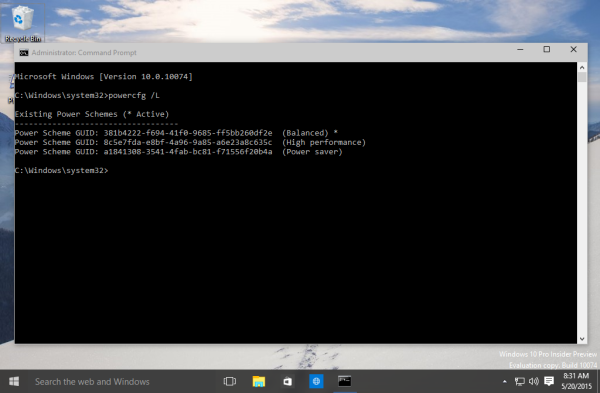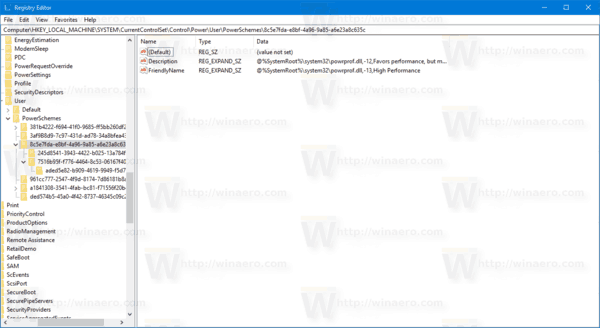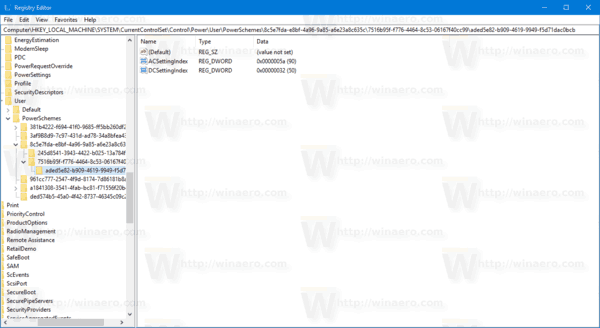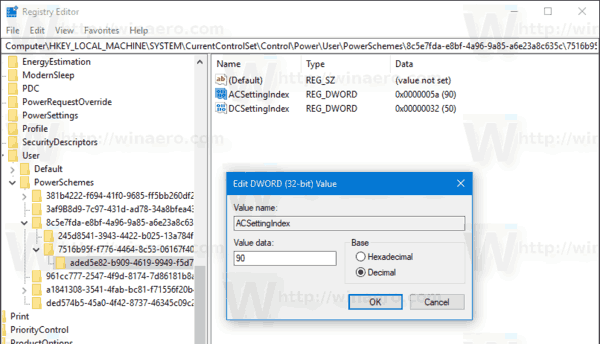Having the correct screen brightness is very important. If you are working a lot in front of your computer, an incorrect screen brightness level can cause eye strain and drain the device battery if it's not running on an AC power source. Changing the brightness is also important if you are changing your environment from a room in your office to outdoors on a sunny day.In this article, we will see how to change the screen brightness with a Registry tweak.
Advertisеment
There are a number of ways to change the screen brightness in Windows 10 without using a Registry tweak. I've covered them in the previous article:
How To Change Screen Brightness in Windows 10
Note: While most portable devices like laptops or tablets support changing the brightness of the screen out of the box, most Desktop PCs come without this ability because the display hardware has its own brightness control. For the method described below to work, you need to have a display with the appropriate hardware support. Also, you may need to update your display drivers. For example, the software brightness settings which directly alter the display's backlight may not work if you have an old CRT monitor.
It is possible to change the screen brightness with a Registry tweak. The brightness level can be modified per each power plan.
To change the screen brightness with a registry tweak, do the following.
- Open an elevated command prompt and type or copy-paste the following command:
powercfg /L
- In the output, you'll see GUIDs for each available power plan. See the following screenshot:

- Note the GUID of the power plan for which you want to change the screen brightness. For example, the GUID of the High Performance power scheme is 8c5e7fda-e8bf-4a96-9a85-a6e23a8c635c.
- Now, open the Registry editor app.
- Go to the key
HKEY_LOCAL_MACHINE\SYSTEM\CurrentControlSet\Control\Power\User\PowerSchemes\8c5e7fda-e8bf-4a96-9a85-a6e23a8c635c
See how to go to a Registry key with one click. Substitute the 8c5e7fda-e8bf-4a96-9a85-a6e23a8c635c with the appropriate value you got in the step 3.

- On the left, expand the key tree to the key HKEY_LOCAL_MACHINE\SYSTEM\CurrentControlSet\Control\Power\User\PowerSchemes\your guid\7516b95f-f776-4464-8c53-06167f40cc99\aded5e82-b909-4619-9949-f5d71dac0bcb. If you don't have such a key, you need to create it.
Tip: If you are getting the following error message "You do not have the requisite permissions to create a new key", run regedit.exe using ExecTI. This will resolve the permission issue.
- On the right, modify or create the following 32-bit DWORD values
ACSettingIndex - specifies the screen brightness level in decimal from 0 to 100 when plugged in.
DCSettingIndex for - specifies the screen brightness level in decimal from 0 to 100 when on battery.
In my case, they are set to 90% and 50% respectively.
- Repeat these steps for all power schemes you want to modify and you are done.
Using the Registry tweak method described above, you can quickly modify the screen brightness settings in your production environment. It is also useful when you have reinstalled Windows on your laptop or tablet.
Support us
Winaero greatly relies on your support. You can help the site keep bringing you interesting and useful content and software by using these options:

I try it and use ExecTI but no success
It doesn’t work. I wrote a Powershell script to (successfully) change these registry keys, but the brightness doesn’t actually change: https://stackoverflow.com/q/73631033/4335480